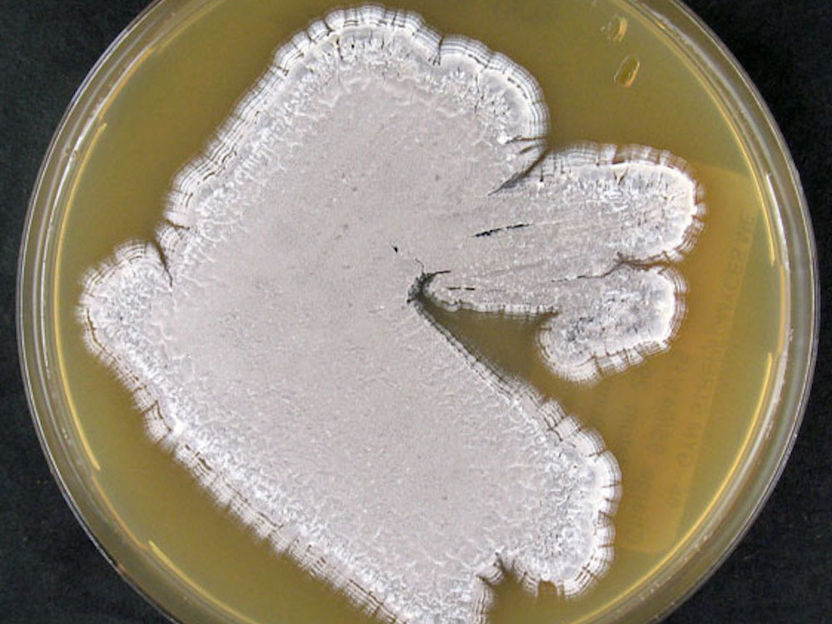New findings on regulation of bacterial antibiotic production
Scientist offers new insights into the molecular processes of antibiotic-producing Streptomyces
Researchers led by Prof. Yvonne Mast of the Leibniz-Institute DSZM – German Collection of Microorganisms and Cell Cultures in Braunschweig, Lower Saxony, have for the first time managed to partially decipher the autoregulation of the biosynthesis of pristinamycin. This antibiotic is used as emergency drug against antibiotic-resistant pathogenic bacteria. The researchers recently published their findings in the renowned journal Frontiers in Microbiology.

Agar plate with S. pristinaespiralis growth (DSM 40338)
DSMZ
Regulation of antibiotic production in Streptomyces
Streptomyces pristinaespiralis belong to Streptomyces, a group of bacteria that produce a range of metabolic products including various antibiotics. The production of antibiotics in Streptomyces is governed by complex regulatory networks that react flexibly to external influences such as physiological parameters. So-called γ-butyrolactones (GBL) are important signaling molecules in this regard. They occur in most forms of Streptomyces, where they initiate the production of antibiotics in the form of a sort of microbial hormone within the context of quorum sensing. For the pristinamycin producing strain S. pristinaespiralis, neither the structure of the signaling molecule nor its coding gene sequence is known. In the present study, researchers led by Prof. Yvonne Mast were able to show for the first time that a total of three different regulators (SpbR, PapR3 and PapR5) act as GBL-receptors and influence pristinamycin production by binding GBL. Microbiologist Yvonne Mast summarizes the main findings: “As yet it is unclear whether all three receptors bind the same signaling molecule. Bioinformatic simulations however suggest that the PapR3 receptors binds a structurally different molecule than the other two receptors.”
Further experiments also allowed the authors to identify a gene (snbU) involved in the biosynthesis of the pristinamycin-GBL-signaling molecule – another research first. In addition, the researchers were able to increase the pristinamycin production by externally adding a synthetic GBL. The outlook is positive, says Prof. Mast: “Our data will contribute to a better insight into how the biosynthesis of antibiotics is regulated. The pristinamycin regulatory system is by now relatively well understood and acts as a modelling system that gives us a more thorough comprehension of antibiotic production in Streptomyces. And this better knowledge about which signaling molecules are involved in the regulation of antibiotic production not only opens up possibilities to optimize antibiotic production, but also to activate so-called silent gene clusters to detect new antibiotics.”
Original publication
Other news from the department science

Get the life science industry in your inbox
By submitting this form you agree that LUMITOS AG will send you the newsletter(s) selected above by email. Your data will not be passed on to third parties. Your data will be stored and processed in accordance with our data protection regulations. LUMITOS may contact you by email for the purpose of advertising or market and opinion surveys. You can revoke your consent at any time without giving reasons to LUMITOS AG, Ernst-Augustin-Str. 2, 12489 Berlin, Germany or by e-mail at revoke@lumitos.com with effect for the future. In addition, each email contains a link to unsubscribe from the corresponding newsletter.


















































